

|
|
|
|
|
|
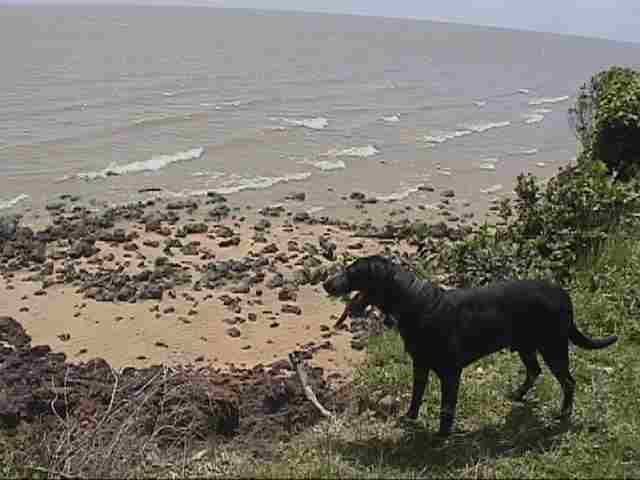
|
What a nice view! " |
In front of Belém, the island of Marajó is surrounded by the Amazon and Tocantins rivers and by the Atlantic ocean. Marajó is the largest fluviomaritm island of the world and larger than Switzerland or Holland. It's approximately 50 thousand squared km and 15 municipal districts. Just one part of it, to the east, is open to the tourist and it is of easy access. The main port of the island of Marajó is at the city of Soure, considered the capital of the island. Basically, the visit involves the cities of Soure and Salvaterra.
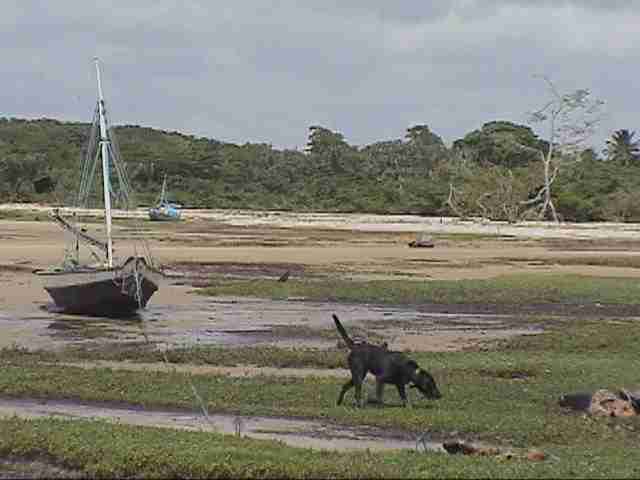
|
"This is where " Brazilian Survivor" took place" * |
To arrive there, you have to take boats or rafts that leave from Belém. In Marajó's Island you'll find rural and Jungle's lodgings. The departure is from the capital Belém, most of the time on a boat that takes three hours to travel the itinerary of 80 km.
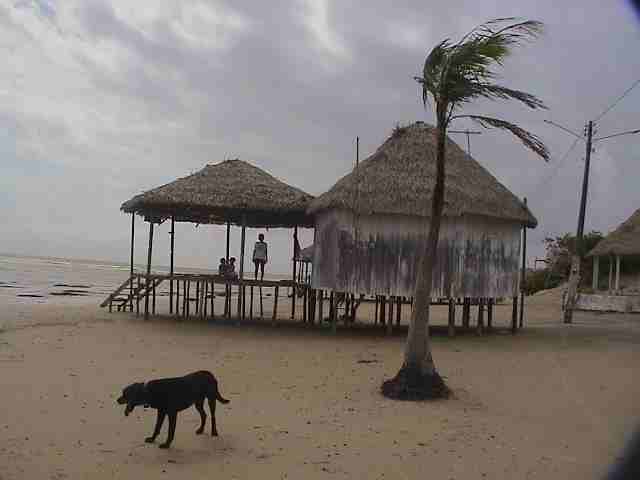
|
"The kiosks are typical." |
As soon as the boat reaches Marajó, the visitors arrive at Salvaterra. To go from there to Soure, you should cross the river on a raft. Besides enjoying the beaches of the small city, like Araruna and Pesqueiro, the tourist use to go to the simple stores of buffalo leather craft. It is around Soure and Salvaterra where the most tourist side of the island is. The city of Soure, on the east coast of Marajó, is considered the capital of the island by offering more infrastructure and services, like hotels, restaurants and a bank agency.
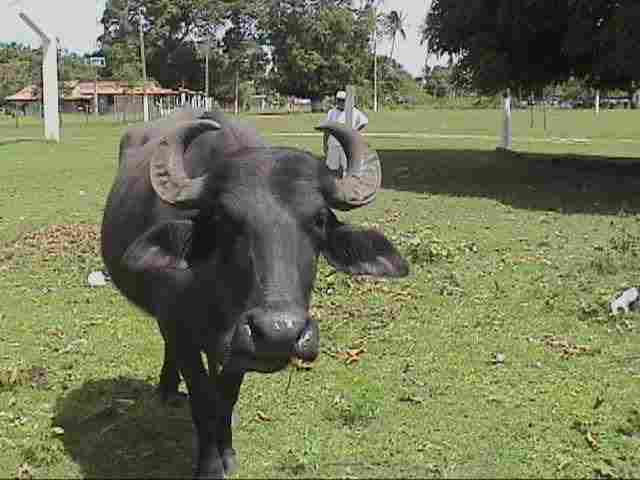
|
"Buffalo" |
The beaches are of fresh or salty water. The main attractions are the beaches of Araruna, "Pesqueiro" and "Praia Grande" (Big Beach), the Museum of Marajó and the events, like the "Festival de Quadrilhas" and "Festival do Boi Bumbá" and "Nossa Senhora de Nazaré". The most frequented are: "Pesqueiro", the favorite of the "marajoaras" (Marajó inhabitants), and the wild Araruna, enclosed by growth of mangroves.
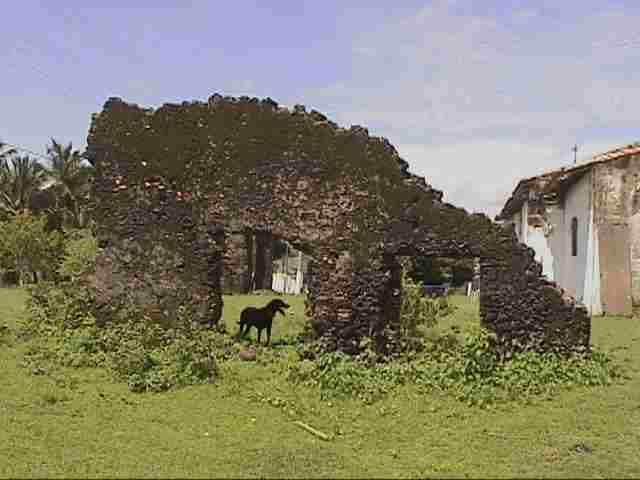
|
"There are some great ruins". |
The largest herd of buffalos of the country is located at the island of Marajó. These buffalos, besides the meat, are also used as means of transportation. Says the legend that the so called "black cattle" arrived at the island when an Indian ship wrecked at the coast and the animals that survived adapted on living in Marajó.
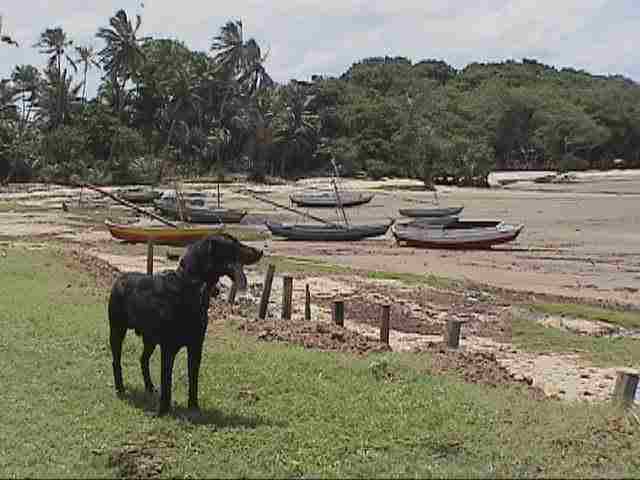
|
"Gee! What a huge tide variation! " |
The fact is that the buffalos - about 500 thousand, more numerous than the marajoaras - are constantly present. Even on the meal. The meat, the milk and the cheese - also known as marajoara cheese. It is not exactly like the "buffalo mozarela", but a little pastier version.
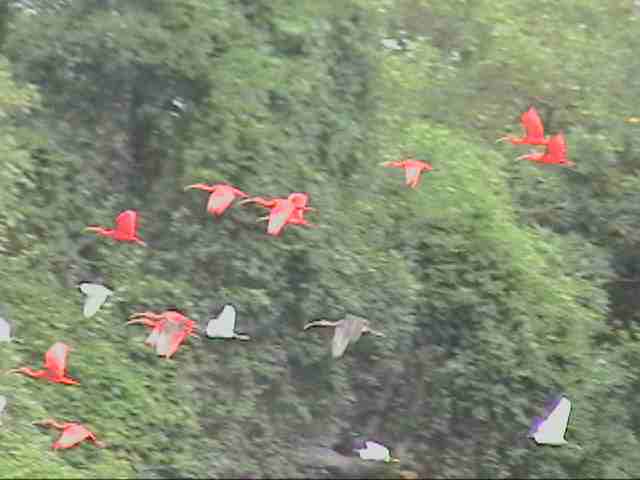
| "Guarás" |
Most tourists, however, used to stay there no more than three days. Enough time to explore, besides the beaches, a little of the buffalos farms, the swamps and the "carimbó" dance, a sample of the folklore and the history. A mixture of indigenous legends with African faiths. The "carimbó", frequently danced in the rooms of the houses, is exhibited in presentations for tourists. For the residents, the animal use is beyond the kitchen and of the craft. The local police, for instance, use the buffalo to move around.
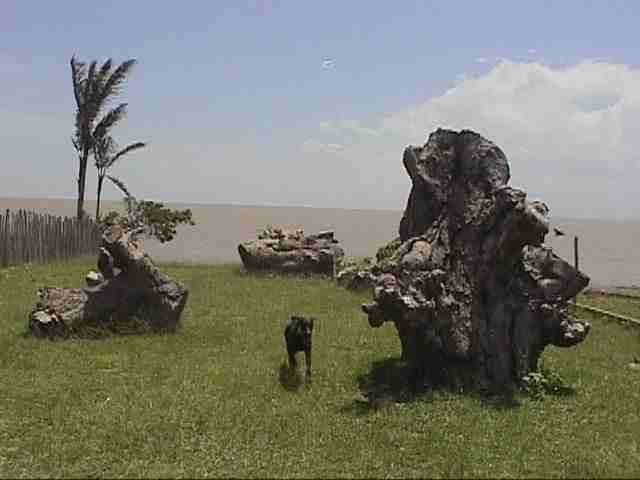
|
"I'm going to listen to some 'carimbó'." |
|
Tips by GUSTAVO VIVACQUA |
|
1. The buses are few, everything is very far and the taxis are few and old. The best thing to do is to reserve a car to move aroud there. 2. Everything is veeeeeery calm at the island. Forget any nightlife. Everything is simple and rustic. 3. There are some surprises in the island, like beaches of fresh water with waves (forget about surfing) and beaches that are of salty or fresh water, depending on the year season. Things that only happen in Brazil. 4. On the north side of the island happens one of the several bores that happen in the North of the country. 5. It's possible to go by car to the Island. Use the ferry-boat in Icoaraci. 6. Taste the typical food: "Pato ao Tucupi" (Duck in tucupi) or the buffalo meat. 7. Take advantage to buy the famous marajoara vases, which are very cheap in Icoaraci. 8. On Monday, all the shops are closed. 9. Make a boat trip at the island. 10. The esat side is asphalted. The rest is flooded and almost to drive through. Good for "off road" lovers. 11. In the island there is a gas station, but some residents stock gas at home to use in their boats. If you need to buy some from one of them, get ready to pay too much money for it. 12. Almost all the houses exhibit a sign saying they sell "choop". No, they are not beer lovers, but of an ice cream: it is pronounced 'chupe.' 13. "It was at the Island of Marajó where "The Brazilian Survivor" took place! " tip from André Moreira – SP |
CLICK HERE to send your tip
CLICK HERE TO SEE OTHER BRAZILIAN DESTINATIONS